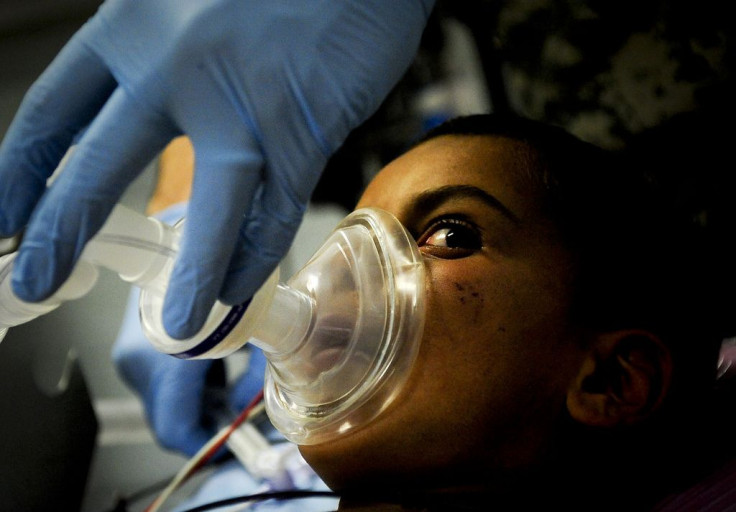General Anesthesia: 8 Interesting Facts About The Procedure That Puts You To Sleep

If you’ve had surgery, your anesthesiologist has probably told you to count backward from 100 in order to be “put to sleep.” Anesthesia is administered in hospitals, and has been for almost 200 years, to block pain or the memory of pain. But despite its widespread use, doctors still don’t know exactly how it works. While millions of people undergo various surgeries that require pain-numbing medications, there are facts about anesthesia you probably don’t know — but should.
1. Anesthesia causes amnesia.
General anesthesia keeps you relaxed, blocks pain, and may also cause amnesia. A 2012 study published in the journal Annals of Neurology found that inhalation anesthetics induced Alzheimer’s-like changes in the brains of adult mice. The drug was toxic to dentate gyru — a type of cell that helps control memory and learning. Although researchers are still unaware of the long-term effects of anesthesia, they do know it takes at least a couple of days before you bounce back from surgery.
2. Older patients exposed to anesthesia face up to a 35% increased risk of dementia.
Older patients can take up to six months to return to normal after receiving anesthesia during surgery, according to a 2013 study. Specifically, patients are more likely to experience a small change in their mental capacity, possibly facing a higher risk of dementia by 35 percent. Researchers believe this may be because anesthesia causes inflammation of neural tissues that lead to postoperative cognitive dysfunction (POCD) and/or Alzheimer’s disease precursors, such as β-amyloid plaques.
3. Frequent exposure to anesthesia during childhood may lead to neurodevelopmental problems.
Children who are exposed to anesthesia once or multiple times for early-life surgeries may be prone to neurodevelopmental problems. A 2012 study published in the journal Pediatrics found that children who underwent anesthetic surgeries before the age of 3 were twice as likely to develop learning disabilities, including long-term language and reasoning deficits, before the age of 10. However, there were no observed differences when it came to behavior, visual tracking, and attention, or fine and gross motor function. This suggests not all cognitive domains are affected by anesthesia the same way.
4. Anesthesia does not actually 'put to sleep.'
Anesthesiologists often tell their patients they will be “put to sleep,” but the truth is they’re being put in a reversible coma. Researchers found a fully anesthetized brain is not unlike the deeply unconscious, low-brain activity seen in coma patients compared to a person who’s just asleep, according to a 2010 study published in the New England Journal of Medicine. These states all represent brain regions that have common circuit mechanisms, such as the cortex — located in the outer edge of the brain — and the thalamus — located at the center of the brain. These regions communicate with each other to determine brain activity in patients under anesthesia.
5. You can wake up during surgery.
Patients under anesthesia can wake up during surgery, also known as “anesthesia awareness.” This rare condition occurs when patients are able to recall their surroundings or an event, such as pressure or pain, related to their surgery while under anesthesia, according to the American Association of Nurse Anesthetists. However, surgeons do use brain-monitoring devices to measure their patients’ consciousness as a means to reduce the risk of this happening.
6. Some people have a rare allergic reaction to anesthetic agents.
Patients can have a potentially fatal allergic reaction when inhaling anesthesia, known as malignant hyperthermia, even if they have no previous history of the reaction. MedlinePlus reported that the disease, which is passed down through families, causes a fast rise in body temperature and severe muscle contractions when the patient inhales. Patients may also experience bleeding, dark brown urine, and muscle ache without an obvious cause, among others.
7. Redheads do not require more anesthesia to get numb.
Redheads were previously thought to require higher doses of anesthesia due to having a specific gene called melanocortin-1 receptor (MC1R). This gene was believed to decrease a patient’s sensitivity to anesthetics, until a 2012 study published in the journal Anaesthesia and Intensive Care proved otherwise. Researchers found there were no differences in anesthetic administration, POCD pain, nausea and vomiting, or the overall quality of recovery in people with red hair and darker hair.
8. Smokers may need higher doses of anesthesia than non-smokers.
Smokers and people exposed to secondhand smoke may require more anesthesia when undergoing operations. A recent study presented at the 2015 European Society of Anesthesiology meeting in Berlin, Germany found that female smokers required 38 percent more anesthesia than non-smokers, and 17 percent more than passive smokers. Cigarette smoke is known to mess up respiratory function while under anesthesia, which interferes with the patient’s tolerance for pain medication.



























